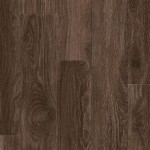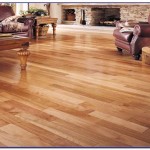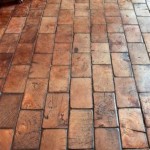Cost of Solid Oak Flooring: Essential Considerations
Solid oak flooring is renowned for its timeless beauty, durability, and value-enhancing properties. However, understanding the factors that influence its cost is crucial for informed decision-making. This article explores the essential aspects that impact the cost of solid oak flooring, empowering you to make the best choice for your space.
1. Wood Species and Grade
There are different species of oak used for flooring, with red oak and white oak being the most common. Red oak tends to be more affordable, while white oak is known for its higher hardness and durability, commanding a premium price.
The grade of the wood also affects the cost. Higher grades, such as Select and Clear, have minimal imperfections and knots, resulting in a more uniform appearance and a higher price point. Lower grades, such as #1 Common and #2 Common, have more knots and natural variations, making them more cost-effective.
2. Plank Size and Thickness
The size and thickness of the planks influence the cost. Wider and thicker planks tend to be more expensive due to the higher material and production costs involved. Wider planks create a more spacious and luxurious look, while thicker planks offer improved durability and stability.
The thickness of the planks also plays a role in the installation process. Thicker planks require more adhesive and labor, resulting in higher installation costs. However, they can withstand more wear and tear and provide a more solid feel underfoot.
3. Finish and Treatment
The finish or treatment applied to the oak flooring affects the overall cost. Pre-finished flooring, which is factory-stained and sealed, is more expensive but offers convenience and consistency. Unfinished flooring requires on-site sanding, staining, and sealing, which can be a more cost-effective option but involves more labor and time.
Additionally, special treatments, such as hand-scraping or wire-brushing, add character and texture to the flooring but come with an additional cost premium.
4. Installation Method
The installation method chosen also impacts the cost. Nail-down installation, where the planks are nailed to the subfloor, is the most common and cost-effective option. However, it may require additional subfloor preparation to ensure a secure installation.
Glue-down installation, where the planks are glued to the subfloor, offers a more flexible and stable installation but can be more expensive due to the specialized adhesive and labor required.
5. Additional Factors
Besides the main factors mentioned above, other aspects can influence the cost of solid oak flooring. These include:
- Geographic location: Prices may vary depending on the availability and transportation costs of oak in different areas.
- Time of year: Demand for oak flooring can fluctuate throughout the year, affecting prices.
- Brand and retailer: Different brands and retailers may offer varying prices for their oak flooring products.
Conclusion
The cost of solid oak flooring is determined by several factors, including wood species, grade, plank size and thickness, finish and treatment, installation method, and additional factors. Understanding these aspects empowers you to make informed decisions that align with your budget, style preferences, and performance expectations. Whether you choose a luxurious high-end option or a more cost-effective choice, solid oak flooring is a timeless investment that enhances the beauty and value of your home.

Average Hardwood Flooring S In 2024 Forbes Home

Cost Of Installing White Oak Flooring Three Trees

How Much Does Hardwood Flooring Cost 2024 Guide

Solid Wood Flooring S Cost

Hardwood Flooring Cost 2024 Per Square Foot Mk

Hardwood Flooring Installation Costs 2024

How Much Should Wooden Flooring Cost In 2024 Checkatrade

Here S How Much Hardwood Flooring Costs In 2024 Angi

Cost To Install Hardwood Floors The Home Depot

How Much Does It Cost To Install Hardwood Flooring Inc








